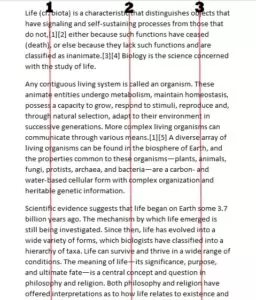What do most successful people have in common? They read a lot. Warren Buffet was once asked what was the key to success. He pointed to a stack of books and said “Read 500 pages like that everyday. That’s how knowledge works. It builds up, like compound interest. All of you can do it, but I guarantee that not many of you will do it”
He’s not alone. Many other successful people do it.
– Mark Cuban reads more than 3 hours everyday
– Elon Musk learnt how to build rockets by reading books.
– Bill Gates reads about 50 books a year.
The average American reads at least 5 hours a week, the average Chinese reads 8 hours a week, which adds up to 20 – 30,000 hours reading during a lifetime. We spend countless hours throughout our education.
The average person reads around 200 words per minute. But there are people who can read at ten times that level 2000 words, and the world speed reading champion Anne Jones can read at 4700 words a minute. What are they doing that we can’t?
Imagine how different your life would be if you could read just twice or three times as fast? How much extra time you could have to read more or do other things. You could learn twice or three times as much in your lifetime with the same retention rate. How much more could you learn? What kind of an advantage would that have given you at school? and what kind of advantage can that give you in your career?
Did you know its possible to read any book in under 1 hour? So far this year (March 11th) I have read about 30 books and I can explain how I learnt to do that and read at a rate of around 800 words per minute.
How to read any book in under 1 hour
How fast can you read?
http://www.readingsoft.com/
http://www.freereadingtest.com/
Sub vocalising the words puts a huge limit to how fast you can read at 200 words per minute. Your eyes are designed for images. Converting images into sound is not efficient. Imagine if your computer converted every image on your computer into sound for you to process it!
To break through to higher speed reading you need to start seeing the words rather than making the sound in your head. This might be a difficult step to imagine but keep this thought in your mind as we go to the next step and I’ll show you how to stop sub-vocalising.

But this method is is slow and inefficient because your reading speed is limited by how fast you can move your eyes. To fix this, you need to make fewer fixations per line, and start using your peripheral vision. Your eyes have a huge amount of peripheral vision that you can learn to use.
First you should start by doing some exercises to read by using your peripheral vision. You can use this programs online to learn to expand peripheral vision. One such program is:
Many people read a book from the first word of the first page and move to the next word and continue throughout the book. If you start with your eyes on the first word, you are wasting a lot of peripheral vision on the margin area which is blank. You can first start small by starting from the second word and finishing at the penultimate word of each line. Over time you can learn to look at each line in two or three fixations by taking snapshots.

Now you can get started on strategies to read a book in under 1 hour.
Why do you want to read?
You need to have a target of what you want to read for. Normally you want to read something that will help you to do something or understand something. The first step is to be clear about what the purpose of reading is. Is it to help you to grow your company? Help you to understand a scientific problem? If you are reading for sheer pleasure then what is it that you find pleasurable about reading? First start by writing this goal down or have it in mind. Someone who is reading for to understand the how a car works will read in a very different way to someone who is reading to help generate ideas for a business problem they are facing.
Planning – 5 minutes.
You can then skim through the chapters you think are most important and read the first line of the introduction and conclusion, and take some snapshots of individual words that jump out and interest you. You can think of questions that will pique your interest when you come to read it a second time.
The Reading – 50 minutes
As you get started on reading you can go through the parts of the book that will help you find the information you need. You can read the first part of the paragraph and skip parts that are not relevant to your goal, and using the principles of fixations.
The 80:20 Rule and Law of Diminishing Returns
After you have been reading a few times and you will find that you have got the same amount of value in 1 hour than you did in 5. But this exercise forcing you to read a book in under 1 hour will force you to read more efficiently and effectively. After doing this a few times you can still go back and read a book in 3 hours if you have the time. You will find that you will read much more quickly than you did before.
Teach Others – 5 Minutes
The final step is to teach someone else what you read. The act of explaining to someone else what you just read will help you to crystallise in your mind what you learnt and helps you to understand it more fully and remember it.
How fast can you read now?
- We’re Hiring International Marketing Manager at Global Admissions - October 29, 2024
- 2025 Intake: 7 Scholarships for ZUST - October 11, 2024
- Study Bachelor’s in Business Management in Shanghai - May 18, 2024
